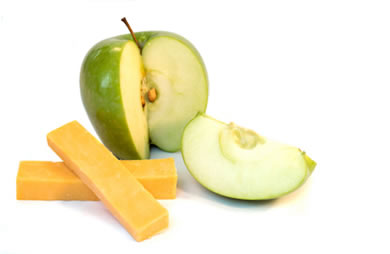|
Back in the 1980s when I was playing high school and college sports, there weren’t a lot of healthy options when my teams would travel to tournaments or meets. Standard options at concession stands included hot dogs, chips, candy, and soda. Back then, bottled water was nowhere in sight. McDonald’s was the typical bus stop choice on the way home because they were the only fast food chain coaches could count on. Meals were burgers that came with fries and a soda. To substitute milk for the soda would cost you extra and courtesy cups for water were the size of three ounce Dixie bathroom cups. Many times my mother would send me off with a snack of nuts and raisins or orange segments to try and balance things out. My college volleyball coach selected Wendy’s as her restaurant of choice when we were on the road each weekend because they were the only fast food option back then with a salad bar. Coach didn’t pay for soda, fries or desserts like a Frosty out of the team budget, which helped a little. However, it was still a choice of a hamburger or the salad bar as our meal option. Today we know that not every salad bar is diet-friendly but back then only the nutrition majors like me knew the strategies for salad bar survival. Unfortunately not that much has changed today. Busy lives continue to make healthy eating a challenge for a young athlete. Weekday practice schedules cause families to grab Food on the Run on their way to the next event. Parents spend weekends sitting at soccer and football fields or ball diamonds causing children options like “walking tacos,” candy or chips from the concession stand or the after game snack provided by a team parent. With snack food and hectic schedules continuing to influence young athletes for several decades, it isn’t any surprise that an article published online in April for the Journal of Nutrition Education and Behavior found that parents tend to be dissatisfied with the healthfulness of food offerings at youth sport settings. Here are some tips to help keep your young athletes active and healthy at the same time. Growing children and developing teens need calories especially after a big game or busy tournament. However, there is a big difference between candy, chips and sugary sports drinks and nuts, fruit and 100 percent juice especially when it comes to nutrition. More and more concession stands are offering fresh fruits, bottled waters and portion controlled snack packs next to the traditional options. Since those options might be hit and miss and tend to be more expensive, planning ahead and packing nutrient rich snacks for young athletes is a great option. Focus on natural, unprocessed foods and healthy fats. Whole grain bagels or homemade granola bars provide carbohydrate rich energy sources. Fresh fruits like frozen grapes and crunchy veggies like red peppers, cucumbers or celery help replenish water and electrolytes lost through perspiration. Healthy fats from options like avocados, almonds and nuts keep kids feeling satisfied and fueled longer. Of course younger kids still want fun snacks so next time you have to provide the team snack, keep these snack rehab ideas in mind.
Here are other articles to help your busy family eat healthy on the go. 20 Nifty, Nutritious Snacks for Kids Snack Rehab 25 After-School Snack Ideas Snacking Healthy Portable Snacking Tips and Ideas 20 Diabetes-Friendly Snack Ideas The 22 Healthiest Fast Foods Do you have trouble making sure your young athlete eats healthy? What is your greatest obstacle? |
More From SparkPeople
|



.jpg)











